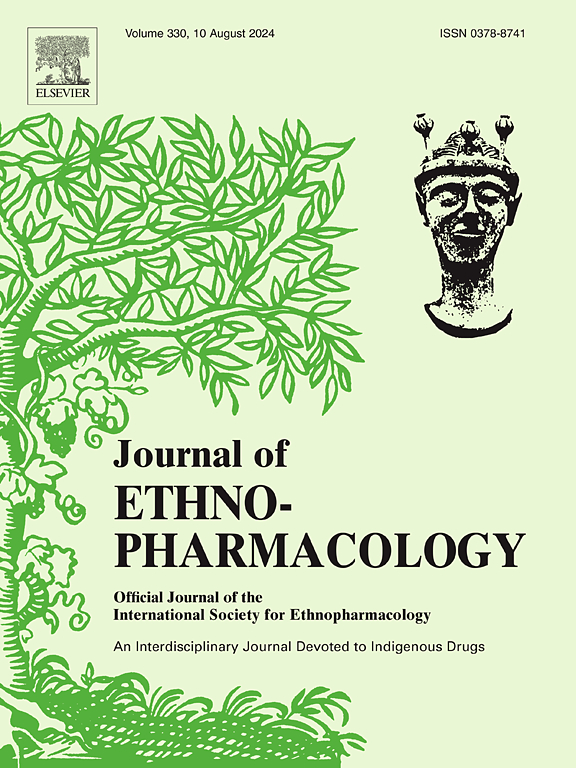New advances of natural products in non-small cell lung cancer: From mechanisms to therapies
IF 4.8
2区 医学
Q1 CHEMISTRY, MEDICINAL
引用次数: 0
Abstract
Ethnopharmacological relevance
With the rise of immunotherapy, the treatment approach for non-small cell lung cancer (NSCLC) has undergone revolutionary changes. However, the prognosis for NSCLC patients has not been significantly improved due to the development of acquired drug resistance. Therefore, there is an urgent need to develop new and more effective drugs for treating NSCLC or improving tumor treatment resistance. Traditional Chinese medicine (TCM) has been gradually incorporated into the combined treatment of NSCLC. Its active components (also known as natural products) exhibit novel structures, multi-target effects, diverse pathways, minimal toxicity, and varied biological activities, which play a therapeutic role in various diseases. Thus, natural products hold great potential for future clinical applications.
Aim of the study
Screening main traditional plants widely used in NSCLC and their derived natural products, as well as exploring the mechanisms by which these natural products act on NSCLC—particularly focusing on their applications—can provide valuable insights for the development of therapeutic drugs targeting NSCLC.
Methods
A comprehensive, computerized literature search was conducted in PubMed, Embase, Web of Science, Cochrane Library, CNKI Scholar, the American Chemical Abstracts, and Wanfang Database up to June 2024, using the following keywords: “traditional Chinese medicine”, “herbal medicine”, “medicinal plants”, and “herbal”, paired with terms such as “non-small cell lung cancer”, “therapy”, “natural products”, and “active ingredient”.
Results
Summarizing current research findings, we discovered eleven medicinal plants containing a total of fourteen natural products. Natural products have a significant impact on tumor progression in NSCLC, including apotosis, autophagy, pyrotosis, cell-cycle arrest and metasis. Moreover, natural products can modulate the activities of various immune cells and reshape the immune microenvironment. Combined with conventional cancer treatments, natural products demonstrate promising therapeutic effects and effectively reverse drug resistance. Furthermore,the use of nano-drug delivery systems to address limitations associated with natural products.
Conclusions
This review summarizes eleven medicinal plants containing a total of fourteen natural products that can enhance NSCLC treatment and indicates their action mechanisms. Furthermore, we also discuss limitations of natural products and explore the use of nano-drug delivery systems to address limitations associated with natural products.

求助全文
约1分钟内获得全文
求助全文
来源期刊

Journal of ethnopharmacology
医学-全科医学与补充医学
CiteScore
10.30
自引率
5.60%
发文量
967
审稿时长
77 days
期刊介绍:
The Journal of Ethnopharmacology is dedicated to the exchange of information and understandings about people''s use of plants, fungi, animals, microorganisms and minerals and their biological and pharmacological effects based on the principles established through international conventions. Early people confronted with illness and disease, discovered a wealth of useful therapeutic agents in the plant and animal kingdoms. The empirical knowledge of these medicinal substances and their toxic potential was passed on by oral tradition and sometimes recorded in herbals and other texts on materia medica. Many valuable drugs of today (e.g., atropine, ephedrine, tubocurarine, digoxin, reserpine) came into use through the study of indigenous remedies. Chemists continue to use plant-derived drugs (e.g., morphine, taxol, physostigmine, quinidine, emetine) as prototypes in their attempts to develop more effective and less toxic medicinals.
 求助内容:
求助内容: 应助结果提醒方式:
应助结果提醒方式:


